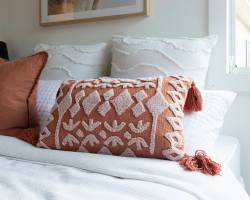
The Power of Symmetry in Home Design
There’s something instantly satisfying about symmetry. A perfectly centered mirror, matching nightstands, or chairs flanking a fireplace—it just feels right. And that’s not just aesthetics talking. Our brains are wired to find balance beautiful. In home design, symmetry isn’t about being rigid or overly formal—it’s about creating a sense of calm, clarity, and visual flow. Here’s why it works—and how to make it work for you.
1. Symmetry Feeds the Eye (and the Nervous System)
Humans crave balance. Symmetry provides visual order, which makes spaces feel more stable and inviting. When your surroundings are composed and harmonious, your brain can relax. That’s why symmetrical design feels especially grounding in high-use spaces like living rooms, bedrooms, and entryways.
It’s not just “nice to look at”—it’s regulating.
2. Start with a Center Point
Every symmetrical setup needs an anchor. It could be a fireplace, a headboard, a window, or a large piece of art. From there, mirror elements on either side—lamps, chairs, side tables, or sconces. Even if the items aren’t identical, they should balance in size, shape, or tone.
Tip: Don’t have a literal center? Create one with a focal point, like a bold console or centered gallery wall.
3. Use Pairs to Create Instant Harmony
There’s a reason designers love pairs. Matching chairs, pendant lights, or vases give a room structure without making it feel stiff. Symmetrical pairs work especially well on bedsides, mantels, dining tables, and flanking doorways.
They anchor the eye and make even eclectic spaces feel considered.
4. Don’t Let It Feel Too Formal
Symmetry doesn’t have to mean perfect replication. You can keep the layout balanced but loosen the feel by mixing materials or textures. For example, two side tables in different finishes, or two lamps that echo each other in shape but not in shade. Think of it as relaxed symmetry—still composed, but lived-in.
Balance over perfection. Always.
5. Bring It into Small and Awkward Spaces
Symmetry works wonders in tight or awkward rooms. A pair of mirrors in a narrow hallway can make the space feel intentional and expansive. Two matching shelves on either side of a TV can soften the tech and add equilibrium.
It gives structure where things might otherwise feel a bit random.
6. Use It to Highlight Asymmetry
Ironically, one of the best uses of symmetry is to frame asymmetry. For example, a centered fireplace with symmetrical bookshelves can draw attention to an off-center sofa or oversized art. The balance around the “flaw” helps it feel deliberate—and even more dynamic.
When used thoughtfully, symmetry lets you break the rules with purpose.




